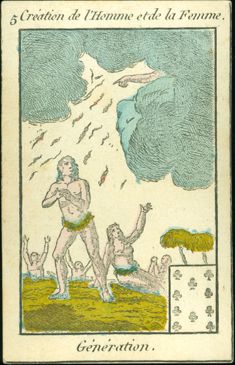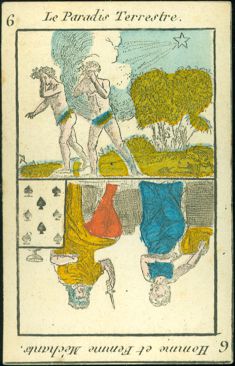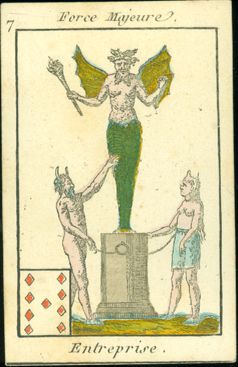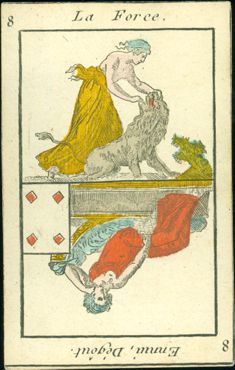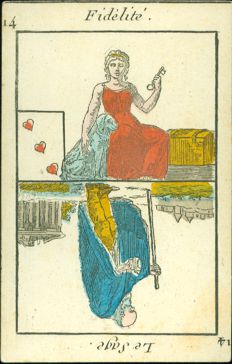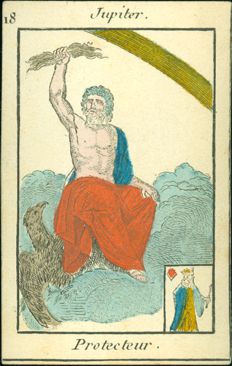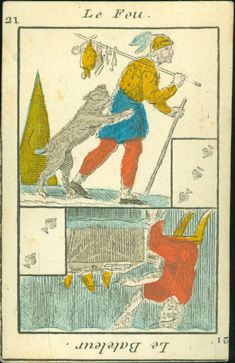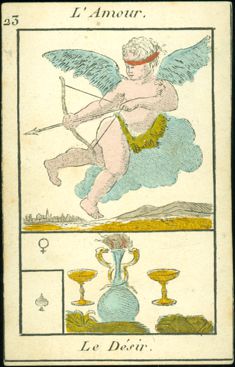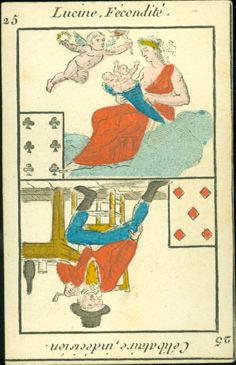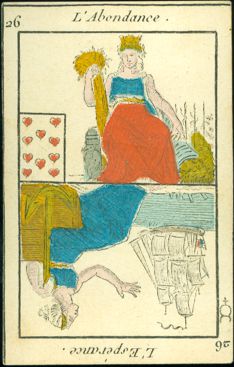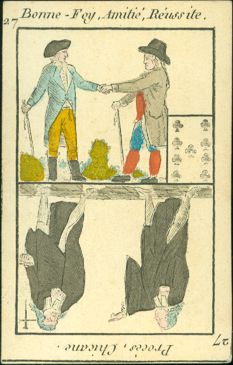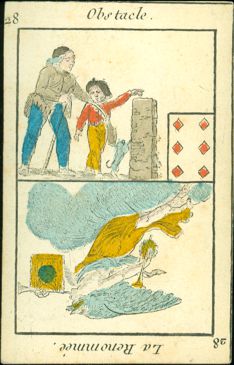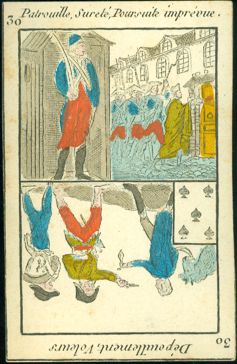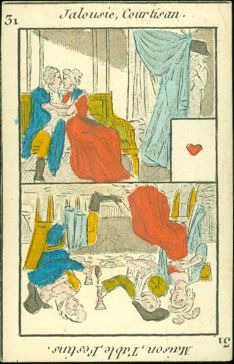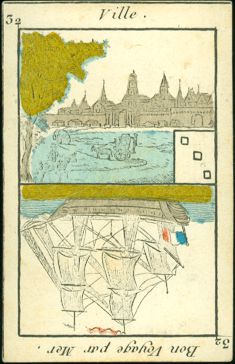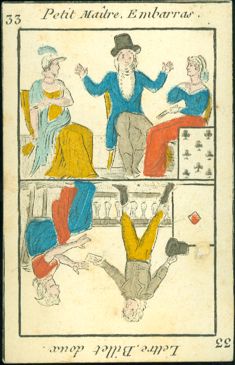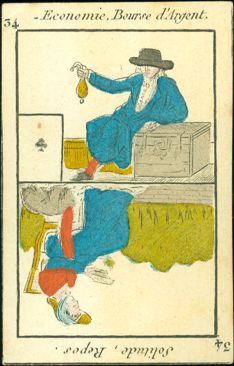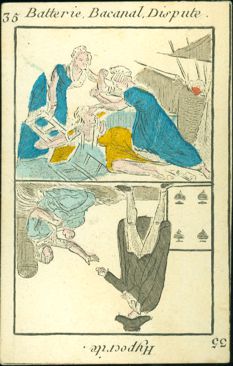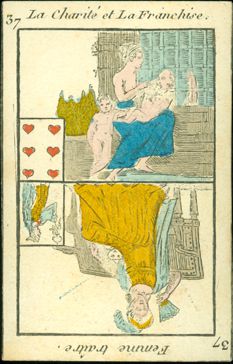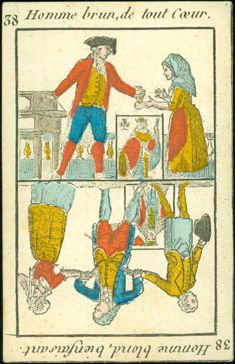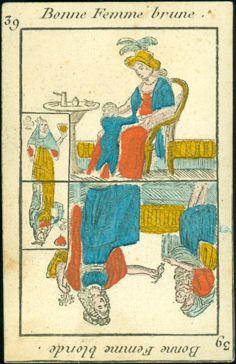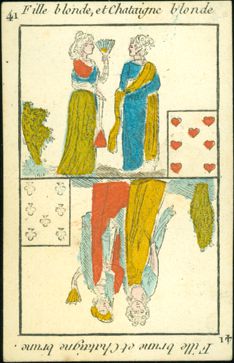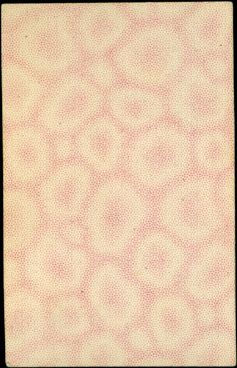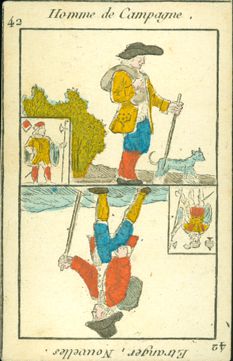August
2016
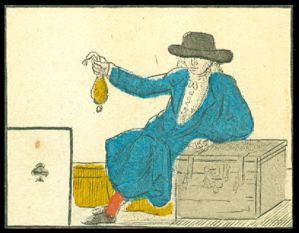 |
It was a
bit of a slow month. The second half brought us warm and sunny weather,
so those days were rather spend outside than in front of a monitor. But
we tried to follow the offer on several Ebay sites and Marktplaats,
a Dutch auction site, as much as possible. It only brought a small
number of new decks. Two of them were older German decks with
interesting sets of illustrated aces. Unfortunately the most promising
one for this spot lacked the joker.
Joop didn't visit any local flea markets, but he did go browsing some
1500 stalls at a large brocante fair in Temploux, Belgium, on the 20th
and brought home 5 decks. Although all were older decks, there was one
that definitely qualified for this spot. |
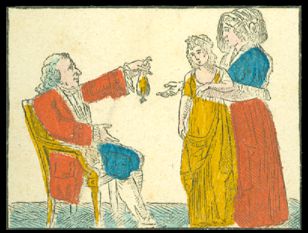
|
We already have
several older or antique fortune telling decks in our collection. The only
restriction is that the cards should show regular playing cards too. So
Lenormand style decks will almost always qualify, but in our collection are also a
number of antique French fortune telling decks with their own captions and card
designs. However, these designs didn't look familiar.
Whenever we find
a deck that is unknown, we search through our books about playing cards and of
course the Cartorama catalogues. This time Jean Darquenne provided us with the
first information, when we found pictures of similar designed cards (Cartorama
# 57, deck 121). The deck was first published as "Le Petit Oracle des
Dames ou Récréation du Curieux" by Pierre François Gueffier from Paris
around 1803. But (much) later editions are known too. There are 4 mentioned in
the Cary catalogues (France # 208, 209, 224 and 227). According to their
descriptions and dimensions, our deck (91x58 mm) is probably # 209, which is dated by Cary
as c1895. The deck is lithographically printed and hand- and stencil
colored.
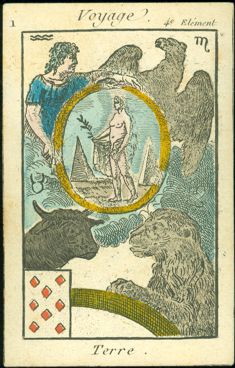 |
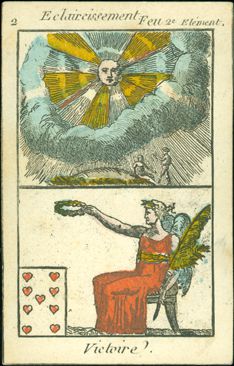
|

|
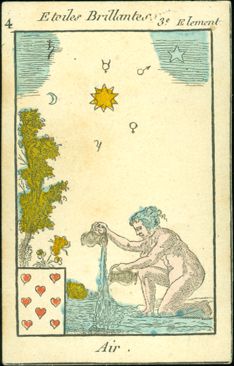
|
|
The deck didn't come with a box or an explicative
leaf- or booklet, so there is not much we can tell about how to use the
deck for fortune telling. |
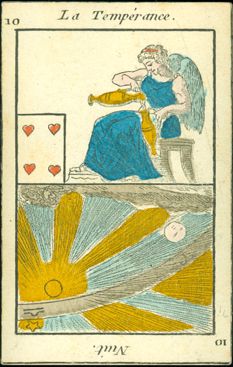 |

|
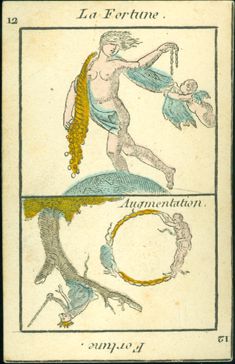
|
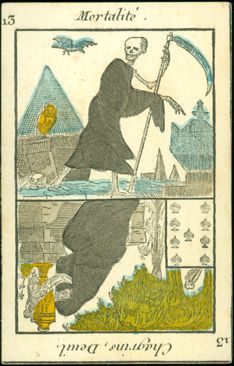
|
| Card 12 is one of the two cards
that don't show a card value. The other is card 22, with is the "consultante/consultant"
card, usually used for the man or woman asking for a reading. Here in the
Netherlands 13 is believed to be the number that brings misfortune. In
this deck it brings death too. |
BACK
TO PRESENT MONTH






